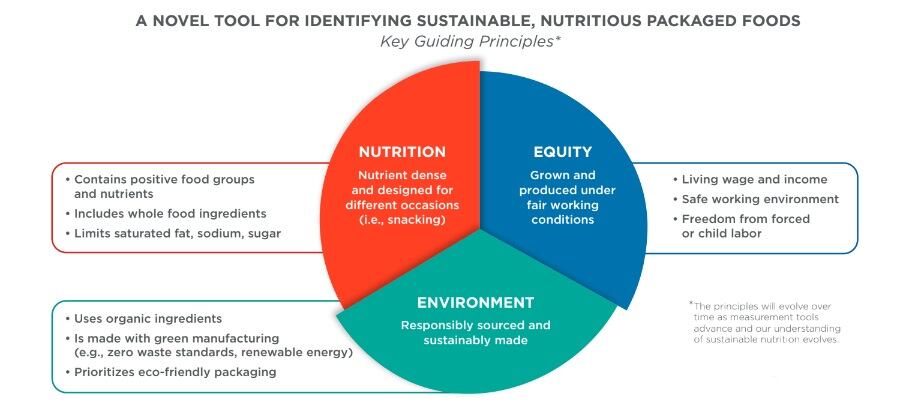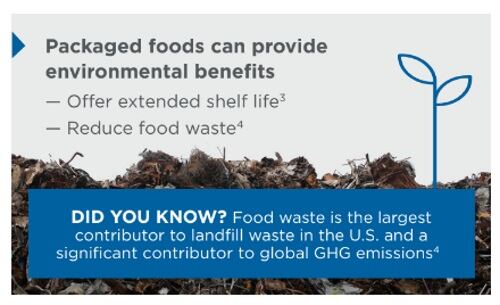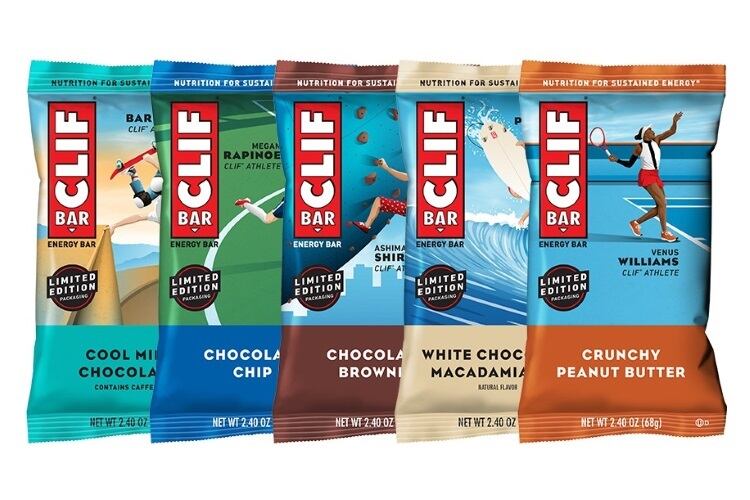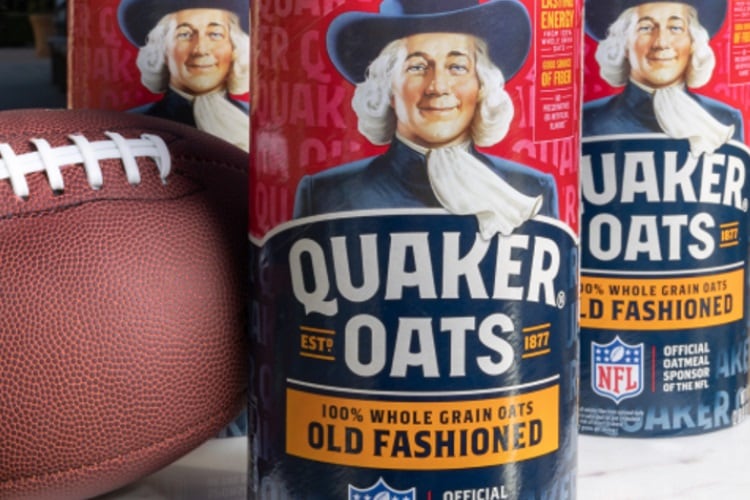The California energy food and drink producer defends the inclusion of ultra-processed packaged snack in the urgent effort needed to improve dietary patterns and eradicate hunger.
At a White House Conference on Hunger, Nutrition and Health in September, the Biden-Harris Administration earmarked more than $8bn to ensure that all Americans have greater access nutritious foods, with the aim to increase their health, but more importantly, to end hunger by 2035.
Lack of access to wholesome and affordable food is a big driver in perpetuating health disparities and the hunger crisis; challenges that have been exacerbated by the pandemic. Throw in climate change and you have a perilous quagmire.
The millions of people afflicted with obesity-related diseases is dichotomously opposed to those facing daily hunger, but sadly, it’s a situation that is imbedded in communities around the globe.
More despondently, the toll of hunger and these diseases is not distributed equally, disproportionately impacting underserved societies, including people of colour, those living in rural areas, people with disabilities, older adults and the LGBTQI+ community.
Changing the ultra-processed mindset

Despite significant global attention to drive the adoption of a healthy, sustainable diet, existing guidance focuses almost exclusively on whole foods. Packaged goods have been largely ignored or, if discussed, touted as ‘ultra-processed’ and discouraged.
Clif Bar & Company wants to change that dialogue, and convened a group of sustainability and nutrition experts to discuss the role that certain packaged foods can play in helping to make such diets achievable and accessible.
The California-based producer concedes the foundation of any diet should be whole foods, but believes SNPFs can play a key role in providing oft-lacking nutrients like whole grains, iron, fibre, calcium, potassium and vitamin D.

Nutrient profiling is defined by the World Health Organization as ‘the science of classifying or ranking foods according to their nutritional composition for reasons related to preventing disease and promoting health’. The NOVA classification system – which evaluates foods according to the degree of processing, the highest being ultra-processed food (UPF) – is the most applied in scientific literature to qualify foods that undergo industrial processes.
Considering that UPFs – everything from cookies and whole grain cereals to yoghurts and ready-to-eat meals – make up 57% of the typical US diet, this could be the answer towards the White House’s 2035 hunger goal.
However, Clif Bar contends the NOVA system has significant limitations, highlighting two studies to back its claim.
Firstly, NOVA fails to account for nutrient density, argues Clif Bar. In fact, avoiding all foods considered ‘ultra-processed’ effectively eliminates many convenient, affordable and nutritious options, like wholegrain cereal bars.
It also challenges that NOVA doesn’t fully address sustainability, adding there is no evidence to support an association between the degree of food processing and environmental impact.
Proposed framework for SNPFs
The paper notes that as most existing profiling systems address nutrition (Nutri-Score, Health Stars) or sustainability (Eco-Store) attributes in isolation, the aim was to develop a framework that offers a more holistic evaluation approach, taking into account human, societal and planetary health.
The framework of guiding principles for defining SNPFs comprises three domains:

Nutrition
“We aligned on the inclusion of positive food groups, positive nutrients, whole food ingredients and limited sugar, saturated fat, and sodium as the key indicators to assess nutrition contributions of packaged foods,” write the authors, noting parameters like the National Salt and Sugar Reduction Initiative were taken into account.
“For example, a packaged meal could be expected to contribute more positive food groups and nutrients or different limits on sugar, saturated fat, or sodium than a snack.”
They maintain that processing is not a key factor of nutrient density.
“More important is food formulation, which is a direct indicator for higher fat, sugar and salt foods.”
The future of food development should align with the four previously proposed domains of improved diet quality, that is, moderation (to drive reduction of saturated fat, added sugar, sodium); balance (plant vs animal protein); adequacy (fortification with calcium, vitamin D, folate, fibre); and diversity (from a variety of food groups).
To further consider cultural sensitivities, the authors say these must align with other drives, like taste, price and convenience.
“There is so much variety in what is currently considered a UPF that advice to avoid all foods in that category can negatively impact nutrition security.”
Environment

Key environmental indicators of SNPFs are to limit greenhouse gas (GHG) emissions, improve soil quality, limit synthetic pesticides and promote biodiversity.
Of the first, the ultimate goal is net zero – including carbon sequestration in the crop/animal production stage – however, data scarcity doesn’t make it currently possibly to quantifying this precisely. Other approaches include looking at dominant ingredients for net carbon footprint, specific to the region where sourced, while organic certification – despite its complexities and associated trade-offs like lower yields and additional costs – is considered the best indication.
“When considering manufacturing characteristics of SNPFs, we were aligned on the pursuit of zero waste to the maximum feasible extent, eco-friendly packaging, and producing food in manufacturing facilities that limit GHG and other emissions that harm people in surrounding communities,” say the authors, raising the importance of consumer education.
“Packaged foods manufactured at scale can come with sustainability and affordability benefits over items prepared at home or in smaller operations – for example, buying raw materials in large quantities, using energy-efficient and continuous processing to reduce water or energy use, maximizing yield to decrease waste, using food waste byproducts and using food packaging technologies to maximise shelf life.”
Equity

Equity characteristics were divided into two aspects; namely, manufacturing and ingredient sourcing considerations from plant to plate ( including product formulation and promotion); and living wages for workers throughout the supply chain (farm, factory, distribution, etc).
“There is significant momentum and interest in living wage and income from governments and businesses, but overall, this is still a very nascent area in terms of measurement.”
A safe working environment, freedom of association and freedom from child labour, forced labour, discrimination and harassment are as important to evaluate when it comes to SNPFs.
Regarding product/promotion, the highest priority indicators of SNPFs are affordability, desirable taste, texture and appearance, and convenience.
“Consumers are used to paying between 7% and 27% of their income on food, making cost an important consideration for packaged food.” However, the authors again favour a living wage over purchase price as a key economic indicator of SNPFs.
Finally, convenience should also include equity considerations. “Packaged foods can help make healthy, sustainable diets achievable by helping save time and reduce stress associated with food preparation, meal planning, and procurement, and by making sustainable eating accessible to all skill levels.”
The case for snacks

The study specifically applies the above guiding principles to the snacks category.
“We propose snacks as an initial category given their prevalence and high rate of consumption among packaged foods,” they write, noting there are obviously distinctions, such as the purpose of the food (meal versus snack) and those formulated for a specific function (endurance exercise and obviously require different nutrition.
In conclusion
“Given the urgency of the climate crisis and widespread food and nutrition insecurity, there is a need to drive adoption of healthy, sustainable diets,” says Clif Bar, today a subsidiary of Mondelez International after the finalisation of its $2.9bn acquisition by the Oreo maker in August 2022.
“Despite significant global attention, there have been challenges aligning to recommendations that are affordable, achievable and scalable.”
Add the study authors, “Until now, the positive role that packaged foods can play has been ignored, and this could be greatly facilitated through further consideration of their nutritional, environmental, and equity impacts in the nutrition policy dialogue.
“Adoption and implementation of the proposed framework would play a meaningful role in helping achieve urgent public and environmental health goals.
They did, however, note “the principles and criteria proposed here are not intended to be final but are likely to evolve over time as measurement tools advance and our understanding of dietary and sustainability science continues to improve.”
The workshop referenced in this article was sponsored by Clif Bar & Company, which also developed the agenda, produced all pre-work input, participated as observers, and assisting in gathering materials used in the paper.
Studies
Ultra-processed food consumption among US adults from 2001 to 2018
Authors: Filippa Juul, Niyati Parekh, Euridice Martinez-Steele, et al
Am J Clin Nutr. 2022 Jan 11;115(1):211-221
doi: 10.1093/ajcn/nqab305.
The Healthfulness of the US Packaged Food and Beverage Supply: A Cross-Sectional Study
Abigail S. Baldridge, Mark D. Huffman, Fraser Taylor, et al
Nutrients. 2019 Aug; 11(8): 1704.
doi: 10.3390/nu11081704
Ultra-Processed Foods and Food System Sustainability: What Are the Links?
Authors: Anthony Fardet and Edmond Rock
Sustainability 2020, 12(15), 6280
doi.org/10.3390/su12156280
Authors: David I Gustafson, Eric A Decker, Adam Drewnowski, et al
Current Developments in Nutrition, Volume 6, Issue 10, October 2022, nzac136
doi.org/10.1093/cdn/nzac136





